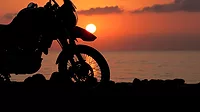BASF Forecasts Bold Auto Colors Accented by ‘Glitz' of Effect Finishes
At the company's recent annual "Color Trends" exhibits and meetings for automotive-industry color designers, BASF's color experts unveiled the findings of an analysis of trends in automotive color preferences.
The experts said the "hot" colors coming down the road reflect auto buyers' interest in more festive and exciting colors, as opposed to the current predominance of traditional silvers, grays and whites.
"Blues will continue to grow in popularity, but will be richer and more jewel-like," said Jon Hall, manager of Color Development for BASF's Automotive Coatings business in North America. "Reds, which have bottomed out in popularity, will enjoy a modest revival, but in bluer and deeper shades. Today's popular browns will shift toward orange hues and shades. We also foresee the emergence of dark, mysterious colors - dark blues, reds, coppers and grays."
Hall said BASF's forecast also strongly suggests heightened demand for sparkle, glitter and more metallic coatings, effects that are figuring prominently in the company's research and development programs. In response, he said the company is focusing on the development of two new automotive finishes: a powder coating that creates a brilliant metallic effect previously attainable only with more expensive tri-coat liquid systems; and a coating that incorporates unique arrangements of microscopic aluminum flakes to produce novel "holographic" colors.
The holographic finishes are designed to reflect subtle, rainbow-like highlights and create the illusion of three-dimensional depth, and will appeal directly to car buyers' fascination with more glitz, Hall said.
BASF's data indicate that the most popular auto colors for 2003 model-year passenger cars and light trucks in North America were: silver, 20%; white, 15%; black, 15%; blue, 11%; gray, 11%; red, 11%; beige, 8%; green, 5%; yellow/gold, 3%; and orange, 1%.
More information is available from the BASF website located at www.basf.com/usa.
Looking for a reprint of this article?
From high-res PDFs to custom plaques, order your copy today!






